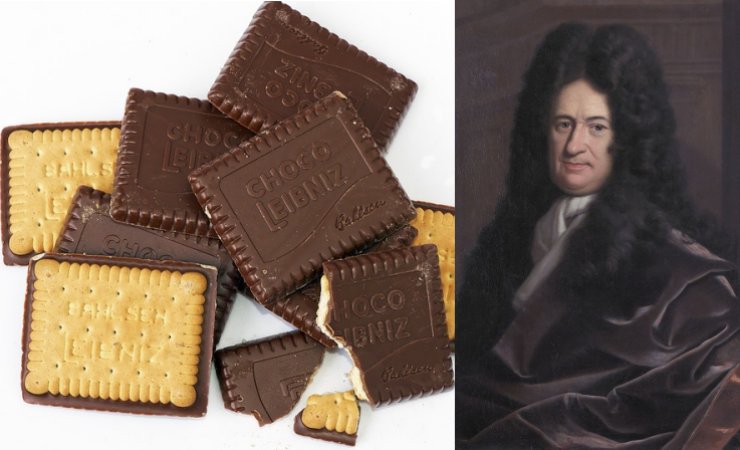Why Have The Leibniz Keks 52 Teeth And Are Named After Philosopher Gottfried Wilhelm Leibniz?
Conny Waters - AncientPages.com - The Leibniz-Keks remain now as popular as ever. Most have tasted these delicious butter biscuits found in almost every modern supermarket.
The production of the Leibniz-Keks started in 1891, and today, we can enjoy the original Butterkeks, but there are also several varieties of biscuits these days. The keks delight all chocolate lovers or anyone who can't resist a tasty biscuit.
But why do the Leibniz-Keks have 52 teeth, and why are they named after philosopher Gottfried Wilhelm Leibniz?
Left: Leibniz-Keks. Credit: Publix Domain - Right: Gottfried Wilhelm Leibniz. Credit: Publix Domain
Every cake or biscuit has its history, and the story of the Leibniz-Keks started in Queen Victoria's England when Hermann Bahlsen (1859-1919) worked as a sugar trader there. Bahlsen decided he wanted to produce his unique biscuit, so he did. He traveled to Hannover in Germany, founded the Hannoversche Keksfabrik, and started the production of the Liebnitz-Keks. Bahlsen's biscuit rivaled a similar French biscuit, the Petit-Beurre.
Initially, the name of Bahlsen was Leibniz Butter-Cakes, but very few people in Germany understood English, and German customers regularly mispronounced "Cakes "(as "Ka-kes "). So he changed the name to Leibniz-Keks.
When mentioning the name, we automatically think of philosopher Gottfried Wilhelm Leibniz (1646 -1716). It's widespread to name foods after famous personalities. For example, the Garibaldi biscuit, which consists of two soft rectangular slabs of biscuits sandwiched in a bed of currants, is named after Giuseppe Garibaldi, Italy's military leader and folk hero.
It is because "during the time Garibaldi spent in Britain, he became a celebrity. It is said the country shut down for three days when Garibaldi visited London in 1864. Higher and lower-class people received him, except for Queen Victoria and the royal family. One could find prints and busts of him in many Victorian homes.
His name was well-known and so popular that 1861 a new biscuit was made in his honor – the Garibaldi biscuit." 1
The prominent German polymath Gottfried Wilhelm Leibniz has very little in common with the popular biscuit Bahlsen started to produce.
Historians have tried to find a connection between the Leibniz-Keks and the biscuits, but frankly, there isn't one. The only thing these two have in common is that philosopher Leibnitz was born in Hannover, the same city where Bahlsen started the production of the biscuits. Who knows, maybe Bahlse admired the German philosopher's works?
Why Have The Leibnitz-Keks 52 Teeth?
What makes the Leibnitz-Keks unique and famous, except for the taste, is that each biscuit has 52 teeth. You may never have thought about it and perhaps not even bothered to count them, but next time, look closer, and you can see the butter biscuit has 52 teeth. Why is that, one can wonder?
There is no particular history behind this number. The shortbread biscuit has 52 teeth for purely aesthetic reasons. Bahlsen thought the teeth gave the biscuit a more attractive appearance.
The Choco Leibniz you often see in the shop is a crisp butter biscuit of our Choco Leibniz, dating back to 1889. It is coated in a layer of sumptuous, creamy chocolate. Currently, the company offers various biscuits with milk, dark, or orange-flavored milk chocolate. You might have guessed already – no matter what taste, all varieties of the Leibnitz-Keks have 52 teeth.
Written by Conny Waters – AncientPages.com Staff Writer
Updated on January 4, 2024
Copyright © AncientPages.com All rights reserved. This material may not be published, broadcast, rewritten or redistributed in whole or part without the express written permission of AncientPages.com
Expand for referencesMore From Ancient Pages
-
 Problems With The Age Of Man And Theory Of Evolution – What Happened In The Past?
Featured Stories | Oct 11, 2021
Problems With The Age Of Man And Theory Of Evolution – What Happened In The Past?
Featured Stories | Oct 11, 2021 -
 Strange Ancient Abduction Case And Mysterious Journey To A Snake King’s Palace In A Parallel World
Featured Stories | May 1, 2021
Strange Ancient Abduction Case And Mysterious Journey To A Snake King’s Palace In A Parallel World
Featured Stories | May 1, 2021 -
 Ruins Of Roman Temple From Reign Of Emperor Antonius Pius Unearthed In Egypt
Archaeology | May 15, 2018
Ruins Of Roman Temple From Reign Of Emperor Antonius Pius Unearthed In Egypt
Archaeology | May 15, 2018 -
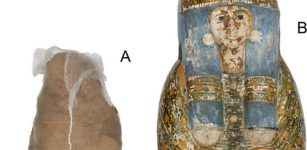 New Study Reveals Rare Mortuary Treatment Of Egyptian Mummy
Archaeology | Feb 8, 2021
New Study Reveals Rare Mortuary Treatment Of Egyptian Mummy
Archaeology | Feb 8, 2021 -
 4,000-Year-Old Stonehenge Of The Netherlands Reveals Its Secrets
Archaeology | Jun 22, 2023
4,000-Year-Old Stonehenge Of The Netherlands Reveals Its Secrets
Archaeology | Jun 22, 2023 -
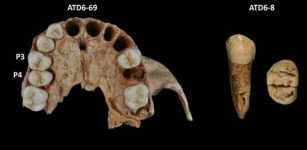 Neanderthals Are Not The Only Species Whose Dentition Is Characterized By The Possession Of Thin Enamel
Archaeology | Jan 19, 2023
Neanderthals Are Not The Only Species Whose Dentition Is Characterized By The Possession Of Thin Enamel
Archaeology | Jan 19, 2023 -
 Legend Of The Blue Men Of Minch: Were They Mythological Creatures Or Real Men?
Featured Stories | May 13, 2016
Legend Of The Blue Men Of Minch: Were They Mythological Creatures Or Real Men?
Featured Stories | May 13, 2016 -
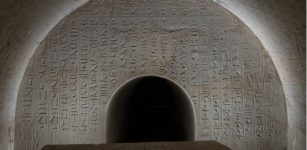 Magnificent Decorated Tomb Of Scribe Unearthed At Abusir Sheds New Light On Ancient Egyptian History
Archaeology | Nov 8, 2023
Magnificent Decorated Tomb Of Scribe Unearthed At Abusir Sheds New Light On Ancient Egyptian History
Archaeology | Nov 8, 2023 -
 Is A Gigantic Ancient City Hidden Underwater In The Bermuda Triangle?
Featured Stories | Jul 8, 2014
Is A Gigantic Ancient City Hidden Underwater In The Bermuda Triangle?
Featured Stories | Jul 8, 2014 -
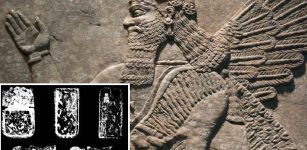 Aluminum Was Used At Least 7,000 Years Ago – Long Before The Metal’s Official Invention In 1825
Ancient Technology | Jul 10, 2017
Aluminum Was Used At Least 7,000 Years Ago – Long Before The Metal’s Official Invention In 1825
Ancient Technology | Jul 10, 2017 -
 Celtic Valhalla And Sacred Wells – Magic Of Invisible Worlds
Celtic Mythology | Nov 17, 2021
Celtic Valhalla And Sacred Wells – Magic Of Invisible Worlds
Celtic Mythology | Nov 17, 2021 -
 Dark History Of Pömmelte, The German Stonehenge – What Can The Nebra Sky Disc And Archaeology Reveal?
Archaeology | Jul 3, 2018
Dark History Of Pömmelte, The German Stonehenge – What Can The Nebra Sky Disc And Archaeology Reveal?
Archaeology | Jul 3, 2018 -
 Ancient Manuscript And Controversial Ancient Book Shed New Light On The Mystery Of The Toltecs
Civilizations | Sep 9, 2018
Ancient Manuscript And Controversial Ancient Book Shed New Light On The Mystery Of The Toltecs
Civilizations | Sep 9, 2018 -
 Modern Humans Did Not Enter Europe By Sea – New Study Says
Archaeology | Mar 7, 2022
Modern Humans Did Not Enter Europe By Sea – New Study Says
Archaeology | Mar 7, 2022 -
 Mystery Of The 80 Million-Year-Old Sharks’ Teeth In The City Of David
Archaeology | Jul 4, 2021
Mystery Of The 80 Million-Year-Old Sharks’ Teeth In The City Of David
Archaeology | Jul 4, 2021 -
 New Moai Statue Found On Easter Island
Archaeology | Feb 28, 2023
New Moai Statue Found On Easter Island
Archaeology | Feb 28, 2023 -
 Ancient Roman Statues of Goddess Venus And Other Precious Artifacts Found In A Trash Pit In France
Archaeology | Apr 8, 2023
Ancient Roman Statues of Goddess Venus And Other Precious Artifacts Found In A Trash Pit In France
Archaeology | Apr 8, 2023 -
 Steamship SS Mesaba Sent Warning To RMS Titanic In 1912 – Her Wreck is Now Identified
Archaeology | Sep 27, 2022
Steamship SS Mesaba Sent Warning To RMS Titanic In 1912 – Her Wreck is Now Identified
Archaeology | Sep 27, 2022 -
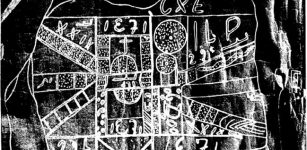 Undeciphered Ancient Stone Maps With Mysterious Signs May Hold Key To The Spider Rock Treasure
Artifacts | Apr 29, 2014
Undeciphered Ancient Stone Maps With Mysterious Signs May Hold Key To The Spider Rock Treasure
Artifacts | Apr 29, 2014 -
 Ostia Antica – Unique Ancient Harbor City In The Suburbs Of Rome
Civilizations | Nov 29, 2018
Ostia Antica – Unique Ancient Harbor City In The Suburbs Of Rome
Civilizations | Nov 29, 2018

